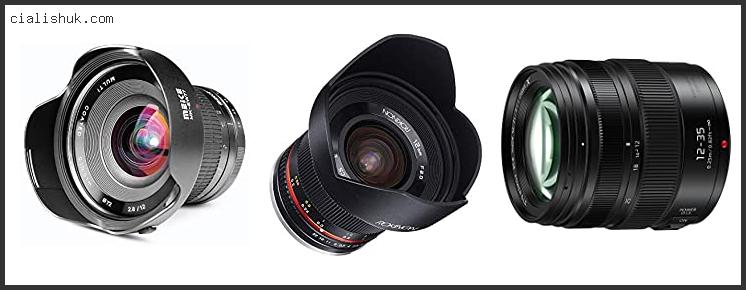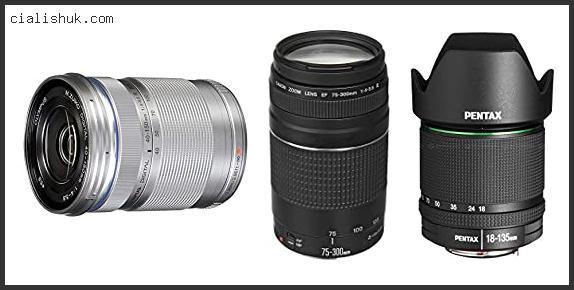Lenses are the soul of photography and videography, shaping how you capture the world. While first-party lenses from Canon, Sony, and Nikon are top-tier, third-party manufacturers like Sigma, Tamron, Viltrox, and Lightdow offer exceptional quality at a lower cost, making professional-grade optics accessible to all. These lenses deliver stunning results for everything from cinematic video to vibrant portraits. The global camera lens market, valued at roughly $5.5 billion in 2024, sees third-party lenses surging in popularity due to their affordability and innovation (Statista, 2024). This article highlights five of the best third-party lenses for photography and video, explaining why each excels, the skills needed to use them effectively, and key factors to consider when investing.
| Lens Name | Key Features | Pros | Cons | Buy Now |
|---|---|---|---|---|
| Sigma 18-35mm f/1.8 DC HSM Art | Constant f/1.8 aperture, 28.8-56mm equivalent (APS-C), ultrasonic AF, 28cm min. focus, USB Dock compatible | Exceptional low-light performance, versatile zoom range, sharp images, silent AF for video | Heavy (810g), APS-C only, no optical stabilization | Buy Now |
| Tamron 28-75mm f/2.8 Di III VXD G2 | Constant f/2.8 aperture, VXD motor, 7.1-inch min. focus, moisture-resistant, 1:2.7 magnification | Lightweight (19 oz), fast and quiet AF, durable build, great for travel | No optical stabilization, narrower range than 24-70mm | Buy Now |
| Viltrox 85mm f/1.8 | f/1.8 aperture, STM motor, 10 elements (1 ED), HD Nano coating, microUSB for updates, EXIF support | Affordable, dreamy bokeh, solid autofocus, great for portraits | No weather sealing, slightly soft at edges wide open | Buy Now |
| Lightdow E 85mm f/1.8 | Manual focus, f/1.8 aperture, UMC coating, hybrid aspherical elements, 6-blade aperture | Budget-friendly, creamy bokeh, robust build, creative control | No autofocus, manual settings only, not for fast action | Buy Now |
| Viltrox 85mm f/1.8 Mark II | f/1.8 aperture, upgraded STM motor, 10 elements (1 ED), HD Nano coating, microUSB, EXIF support | Improved AF, professional features, sharp images, great value | No weather sealing, no optical stabilization | Buy Now |
Why Choose Third-Party Lenses?
No products found.
No products found.
Third-party lenses are crafted by companies that don’t make camera bodies but design optics for mounts like Sony E and Canon EF-S. They stand out for several reasons:
- Affordability: Often 20-50% cheaper than first-party lenses, they bring high-end performance to budget-conscious creators.
- Unique Optics: Brands like Sigma offer lenses with rare specifications, such as the 18-35mm f/1.8’s constant wide aperture.
- Quality: Modern third-party lenses match first-party optics in sharpness, autofocus speed, and build quality.
- Versatility: Many are optimized for both stills and video, with features like silent autofocus and smooth aperture control.
Choosing the right lens means matching it to your camera, shooting style, and budget. Below, we explore five third-party lenses that shine in 2025, each selected for its performance and value.
1. Sigma 18-35mm f/1.8 DC HSM Art (Canon EF-S)
Why It’s Exceptional: The Sigma 18-35mm f/1.8 Art, priced at around $799, is a game-changer for APS-C cameras, boasting the world’s first constant f/1.8 aperture in a zoom lens. Equivalent to 28.8-56mm on crop sensors, it excels in low light and offers superb depth-of-field control, ideal for portraits, landscapes, and cinematic video. Its ring-type ultrasonic autofocus motor delivers fast, silent focusing, while full-time manual focus ensures precision. A 28cm minimum focusing distance enables dramatic close-ups with creamy bokeh. Compatible with Sigma’s USB Dock and MC-11 adapter for customization, its solid build and 72mm filter thread make it a versatile workhorse.
Market Context: Fast-aperture zooms are in high demand among hybrid shooters, with Sigma’s Art series setting the standard for optical excellence (Amateur Photographer, 2025). This lens is a top pick for Canon APS-C users.
Skills Needed:
- Mastery of shallow depth of field for creative subject isolation.
- Proficiency in framing within the 18-35mm range for versatile shots.
- Video stabilization techniques, as the lens lacks optical stabilization.
Key Factors to Consider:
- Designed for APS-C sensors, so confirm compatibility with your Canon EF-S camera.
- Its weight (810g) may require a tripod or gimbal for video.
- Use lens filters to protect the front element outdoors.
2. Tamron 28-75mm f/2.8 Di III VXD G2 (Sony E)
Why It’s Exceptional: Priced at $899, the Tamron 28-75mm f/2.8 G2 is a compact, powerful zoom for Sony E-mount cameras, weighing just 19 oz and measuring 4.6 inches. Its VXD linear motor provides lightning-fast, whisper-quiet autofocus, perfect for photography and video. A 7.1-inch minimum object distance at 28mm allows close-up shots with a 1:2.7 magnification ratio, rivaling macro lenses. Moisture-resistant construction and a fluorine coating ensure durability in tough conditions. With sharp images and pleasing bokeh, it’s a go-to for portraits, street photography, and events.
Market Context: Tamron’s lenses are gaining ground among Sony users, with this lens praised for its portability and value (Fstoppers, 2022). Lightweight zooms are increasingly popular in the mirrorless era.
Skills Needed:
- Composition within the 28-75mm range for flexible framing.
- Autofocus customization for smooth video tracking.
- Post-processing to enhance colors and contrast.
Key Factors to Consider:
- Pair with a camera with in-body stabilization, as it lacks optical stabilization.
- Use a gimbal for smooth handheld video.
- Check firmware updates for optimal autofocus.
3. Viltrox 85mm f/1.8 (Sony E)
Why It’s Exceptional: The Viltrox 85mm f/1.8, at around $399, offers professional portrait performance for Sony full-frame cameras on a budget. Its f/1.8 aperture creates dreamy bokeh and excellent subject isolation, while the stepping motor (STM) ensures quiet, accurate autofocus for stills and video. With 10 elements in 7 groups, including one ED glass element and four high-transparency elements, it minimizes chromatic aberration and boosts color fidelity. The HD Nano coating reduces flares and ghosting, and a microUSB port supports firmware updates. EXIF data transmission and a wide aperture range (f/1.8-f/16) make it highly versatile.
Market Context: Affordable primes like this are popular among content creators, with the 85mm focal length ideal for portraits (Focus Camera, 2022).
Skills Needed:
- Portrait lighting to maximize bokeh and subject separation.
- Autofocus tuning for precise video focus.
- Understanding of 85mm framing for flattering compositions.
Key Factors to Consider:
- Ensure firmware compatibility with your Sony camera.
- Use a fast shutter speed to avoid overexposure at f/1.8.
- Protect the lens in harsh conditions, as it lacks weather sealing.
4. Lightdow E 85mm f/1.8 (Sony E, Canon EF)
Why It’s Exceptional: At just $199, the Lightdow E 85mm f/1.8 is a fully manual prime lens that rewards skilled photographers with creative control. Designed for Sony E and Canon EF mounts, it requires full manual camera mode, delivering crisp, high-contrast images. Its optical design includes hybrid aspherical elements and ultra multi-coating (UMC) to reduce aberrations, while six rounded aperture blades produce creamy bokeh. The robust build and smooth focus ring ensure durability and precision, making it ideal for deliberate portraiture and artistic video.
Market Context: Manual focus lenses are a niche favorite for their affordability and character, with Lightdow appealing to budget-conscious creatives (ePHOTOzine, 2022).
Skills Needed:
- Proficiency in manual focus for precise control.
- Portrait composition to leverage the 85mm focal length.
- Lighting techniques to enhance bokeh.
Key Factors to Consider:
- Requires practice due to the lack of autofocus.
- No electronic contacts, so adjust settings manually.
- Best for static subjects, not fast-action shooting.
5. Viltrox 85mm f/1.8 Mark II (Sony E)
Why It’s Exceptional: The Viltrox 85mm f/1.8 Mark II ($399) is an upgraded autofocus prime for Sony E-mount, compatible with full-frame and APS-C cameras. Its f/1.8 aperture delivers rich bokeh and subject separation, perfect for portraits. The improved STM motor ensures quiet, precise autofocus for stills and video. With 10 elements in 7 groups, including one ED element, it reduces aberrations and enhances color accuracy. The HD Nano coating minimizes flare, and a microUSB port supports firmware updates. Electronic aperture control and EXIF data transmission add professional functionality.
Market Context: The Mark II’s enhancements make it a top choice for Sony users, with affordable portrait lenses in high demand (Amateur Photographer, 2025).
Skills Needed:
- Mastery of shallow depth of field for portraiture.
- Autofocus customization for video focus pulls.
- Post-processing to enhance sharp output.
Key Factors to Consider:
- Check firmware for optimal autofocus.
- Use a stabilized camera body, as it lacks optical stabilization.
- Protect the lens in outdoor conditions due to limited weather sealing.
Key Considerations for Choosing Third-Party Lenses
- Camera Compatibility: Confirm the lens mount (e.g., Sony E, Canon EF-S) and check for adapter needs, which may affect autofocus.
- Shooting Style: Select lenses based on your needs—zooms for versatility, primes for portraits, or wide-angles for landscapes.
- Budget: Prices range from $199 (Lightdow 85mm) to $899 (Tamron 28-75mm). Set a realistic budget.
- Autofocus vs. Manual Focus: Autofocus lenses (e.g., Viltrox 85mm) suit fast-paced shooting; manual lenses (e.g., Lightdow 85mm) demand skill but offer control.
- Build Quality: Choose weather-sealed lenses (e.g., Tamron 28-75mm) for outdoor use. Budget options may lack durability.
- Firmware Updates: Third-party lenses may need updates for performance. Check manufacturer websites.
Conclusion
Third-party lenses from Sigma, Tamron, Viltrox, and Lightdow offer unmatched value and performance, empowering photographers and videographers in 2025. From the innovative Sigma 18-35mm f/1.8 to the budget-friendly Viltrox 85mm f/1.8 Mark II, these five lenses cater to diverse creative needs. By aligning your lens choice with your camera system, honing the necessary skills, and considering compatibility and build quality, you can achieve stunning results without breaking the bank. As the lens market grows, third-party manufacturers prove that professional-grade optics are within reach for all creators.


